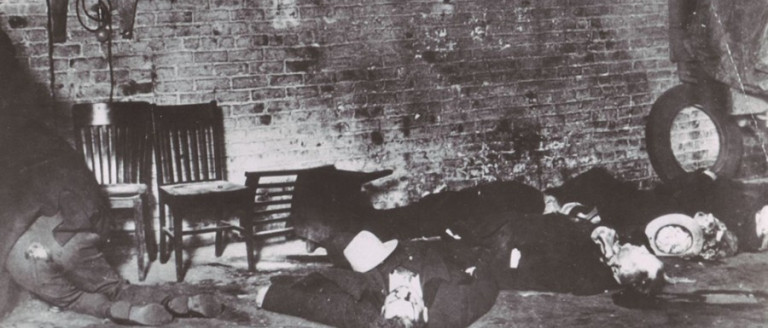Al Capone: The St Valentine's Day Massacre
Posted on 14th April 2021
Al Capone, the son of first-generation Italian immigrants from the poor side of town was to become the most notorious gangster in American history and be responsible for one of the most famous massacres in the annals of crime.
He was born Alphonse Gabriel Capone in Brooklyn, New York, on 17 January 1899 one of nine children. His father, Gabriel, was a barber while his mother Teresina worked as a seamstress and though times were hard especially with so many mouths to feed the Capone’s were considered a respectable family even if some of their children were to turn out better than others.
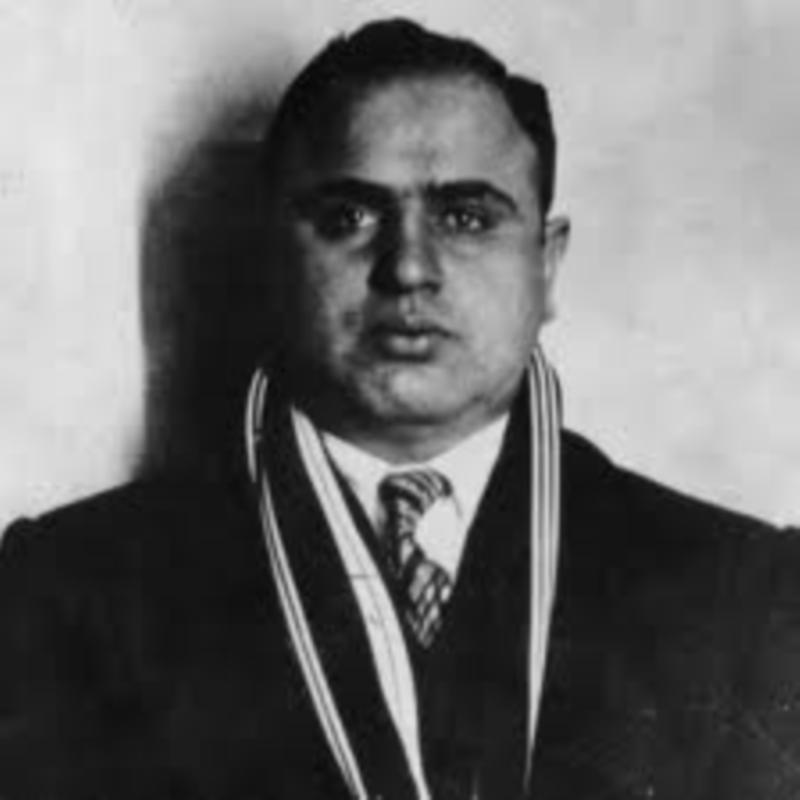
Alphonse dropped out of school aged just fourteen preferring to earn a living doing menial jobs until he found an easier way to make money as a member of the local Five Points Gang where as a burly, aggressive teenager handy with his fists he soon came to the attention of the gang’s leader Johnny Torrio, who found him a job working at the Harvard Inn as a doorman and chucker-out for the racketeer Frankie Yale. It was while he was working at the Inn that he received the distinctive facial markings that were to earn him his nickname Scarface, when he insulted a woman unaware that her brother, the gangster Frank Gallucio, was also present. Gallucio confronted Capone and a fight broke out during which he was slashed three times across the left side of his face with a razor. Forced to apologise to Gallucio he was obviously not one to bear a grudge because he later employed the gangster as his bodyguard, but then he was always impressed by anyone who could best him in a fistfight.
On 16 January 1920, the 18th Amendment also known as the Volstead Act earlier passed by Congress which outlawed the production, importation, transportation, and sale of alcohol was ratified by the various States and signed into law by President Woodrow Wilson. Prohibition, as it was known, offered the opportunity for any gangster willing to take the risks involved to make riches beyond his wildest dreams.
In the meantime, Johnny Torrio had been asked by his uncle ‘Big’ Jim Colosimo, the leading Chicago gangster, to resolve a violent dispute he was having with La Mana Negra, or the ‘Black Hand,’ a loosely knit criminal organisation active in Italian-American communities that extorted money with menaces. Torrio was a man on the make and eager to seize the opportunity to impress he recruited the always ruthless and reliable Al Capone to be his right-hand man and over the next few months numerous members of the Black Hand turned up dead, their bodies left in public places for all to see.
It was a brutal response to what in large part was more a perceived threat than a real one, but it worked and Capone, who never shrank from violence proved a particularly effective enforcer.
Colosimo, believing his position secure now tried to side-line Torrio, a man with whom he’d had a series of increasingly furious rows over his refusal to get involved in bootlegging. He had made his fortune through the rackets, illegal gambling and prostitution, and wanted it to remain that way. The other gangsters knew that this was no longer where the real money was to be made and so on 20 May 1920 Colosimo was gunned down in his own cafe by Frankie Yale, almost certainly on the orders of Johnny Torrio.
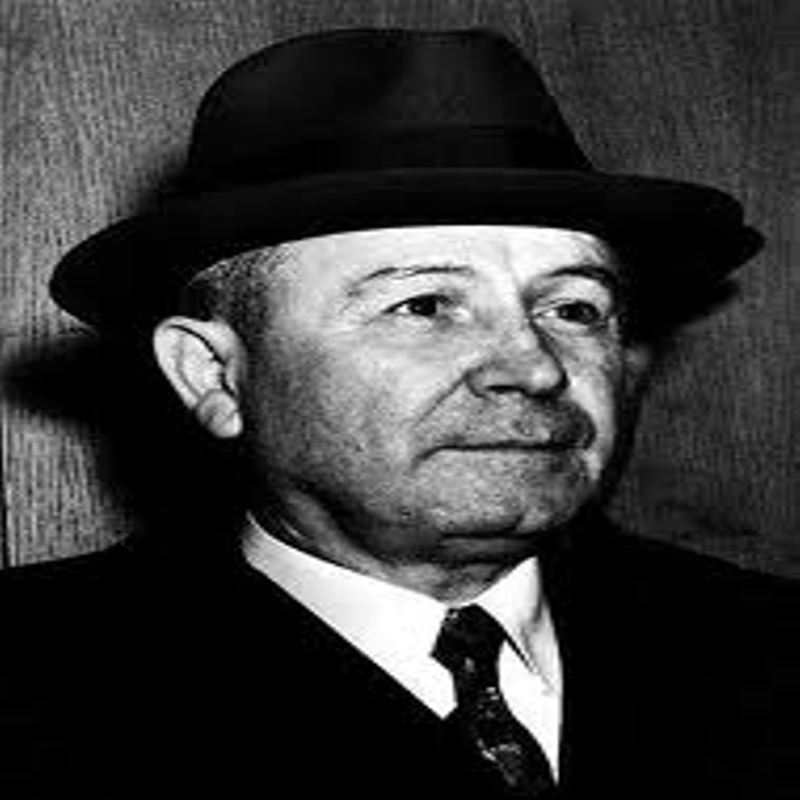
Following the murder of his uncle, Torrio took over his Criminal Empire and immediately switched its operations to the more lucrative production and selling of illicit booze. It was a cutthroat business, and Al Capone was by now the man Torrio looked to if there was any dirty work to be done.
When in May 1923, a friend of his, Jake ‘Greasy Thumb’ Guzik was roughed up in an altercation with small time crook Joseph Howard, he sent Capone to resolve the dispute. Howard was known to have a big mouth and when during an argument he accused Capone of being a pimp a simple beating was no longer enough and so he instead shot him six times, four times in the face.
In 1924, Torrio entrusted Capone with the task of ensuring that the District of Cicero elected his man as Mayor. Ballot papers were handed over to Capone’s people under the threat of violence and his thugs were present at every Polling Station to ensure that people voted the right way, and they did. Torrio’s choice for Mayor was elected with an overwhelming majority but when he decided to assert his authority by promising to run the gangsters out of town, Capone met him in full view of the public and proceeded to knock him down the Town Hall steps. He wasn’t a problem after that.
In November 1924, Torrio ordered the murder of the Chicago Outfit’s great rival the North Side Gang’s leader, Dion O’Bannion. The gunning down of O’Bannion as he worked in his flower shop was to be the cause of the five-year gangland feud that would culminate in the St Valentine’s Day Massacre for despite his death the territorial issues that divided the two gangs remained, and the North Side Gang was determined to avenge its leader’s murder.
In early 1925, Johnny Torrio was seriously wounded in an assassination attempt and badly shaken by his brush with death he decided to retire to Italy; surely there could only be one possible choice as his successor and so it proved – Torrio handed his Criminal Empire over to Al Capone. But the change at the top did nothing to end the feud – the new leaders of the North Side Gang, Hymie Weiss and Bugs Moran were no friends of Capone.
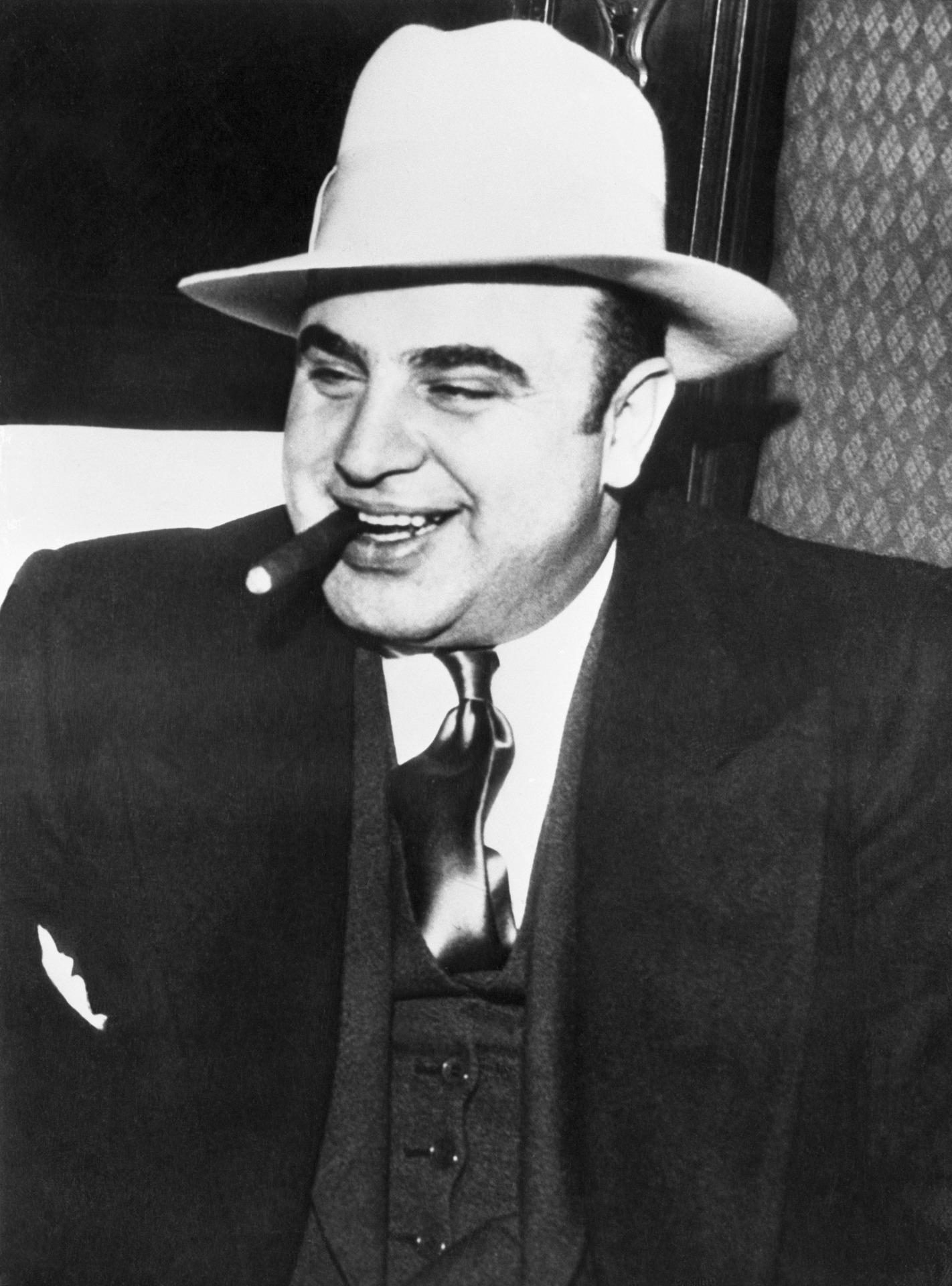
The larger than life Al Capone was well suited to running a large criminal enterprise being not just wily, tough and self-confident but also flamboyant and with a sense of occasion. He actively courted the press and with his trademark fat cigar and fedora hat became one of the most photographed and written about men in America. But his celebrity also made him enemies and brought him to the attention of Law Enforcement.
He established his headquarters at the Lexington Hotel in Chicago which became a virtual fortress and from where he brought together all the various strands of his Criminal Empire which by 1926 had an annual turnover of more than $100 million using much of this money to buy political power and he soon had Policemen, Judges, and even the city’s Mayor ‘Big Bill’ Thompson on the payroll.
On 20 September 1926, Capone was lunching in the dining room of the Hawthorne Hotel when a motorcade of ten cars drove past firing machine guns. The diners hit the floor, but it transpired they had only been firing blanks. Believing the danger had passed Capone reassured the other diners that it had been a foolish prank and shaken but unhurt they brushed themselves down and resumed their meals when a few minutes later the motorcade returned and this time they weren’t firing blanks.
The dummy-run shooting had been an attempt by Bugs Moran to lure Capone out of the hotel. It had failed and though no one was killed in the subsequent fusillade several bystanders were wounded – Capone paid for their medical bills.
The close shave at the Hawthorne Hotel convinced Capone to increase his security and from now on he would have bodyguards with him at all times which for a man who had always taken pride in his ability to take care of himself was somewhat of a personal humiliation. He also reinforced his Cadillac with steel plate and had the windows fitted with bullet-proof glass; as a further precaution he established a number of safe houses in 1928 purchasing a luxury retreat in Palm Beach, Florida.
But putting his personal safety to one side, Capone was not slow to retaliate.
A week after the attack on the Hawthorne Hotel, Hymie Weiss was gunned down and killed, and a Bugs Moran owned Dog Track was burned to the ground. In reprisal, Moran launched a series of arson attacks on Capone owned establishments.
But the North Side Gang escalated the war when on 7 September 1928, they murdered two Presidents of the Capone controlled Unione Siciliane, Pasquiliano Lolordo and Antonio Lombardo both close personal friends of Capone who despite his reputation for brutality was also an emotional and often sentimental man. The death of his friends hurt him deeply and he knew that the targets of Moran’s attacks were intended to do just that. When an attempt was made to murder one of his chief enforcers it was to prove the final straw. He would deal with Bugs Moran once and for all.
On the night of 13 February 1929, Capone had an associate in Detroit contact Moran with information that a shipment of hijacked Canadian whiskey would be delivered to his main transportation depot, a garage at 2122 North Clark Street, Chicago, the following day. Moran confirmed that he would be there to meet it.
The following morning, Moran drove to the garage as had been arranged but stopped short of it when he saw a police squad car parked outside. Believing that he had stumbled across a police raid he decided to take coffee in a nearby cafe and wait for them to leave. In the meantime, those inside the garage: Adam Heyer, Al Weinshank, Johnny May, Pete and Frank Gusenberg, Reinhardt Schwimmer who was not a gangster but just liked to hang out with them, and James Clarke, Moran’s brother-in-law had been lined up against the wall by a number of uniformed police officers.
They were not overly concerned believing that it was just another shakedown but a few minutes later three men entered armed with Thompson sub-machine guns and opened fire. Riddled with bullets six of the men died instantly.
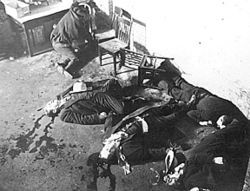
Hearing the gunfire Bugs Moran fled his bolthole in the nearby cafe as police, sirens wailing, rushed to the scene where the sight that greeted them was one of slaughter; blood and brains covered the wall and floor and seven bullet riddled bodies lay motionless upon the ground. Amazingly one, Frank Gusenberg was still alive, if barely. Rushed to hospital he was asked who had shot him replying, “No one shot me.” He died soon after. The only survivor of what was too become known as the St Valentine’s Day Massacre had been Johnny May’s German-Shepherd dog, Highball.
The Police were at first baffled by the cold-bloodied ferocity of the crime but suspicion soon fell on Al Capone, but he had been at his home in Florida when the murders had taken place. When questioned by the press on the massacre he replied: “Only Bugs Moran kills like that.”
Privately he joked that it was his special calling card to a much loved and cherished friend but in truth he was furious that the massacre had missed its intended target.
The St Valentine’s Day Massacre was a huge news story and served as a reaffirmation of Capone’s power, but Bugs Moran was still alive and he was not a man to back down. Capone knew this and that consequently his life was still in danger. He also firmly believed that Moran could not have been so lucky and must have been tipped off. He suspected that three of the men involved in the massacre were the culprits – Albert Anselmi and John Scalise, the so-called “Murder Twins”, who had almost certainly been responsible for the earlier killing of Dion O’Bannion, and Joseph Giunta. Word had reached Capone that they had been talking to Moran and had also been conspiring with another Mob Boss, Joe Aiello. On 7 May 1929, he invited all three of them to a banquet at the Lexington Hotel.
The talk had been light-hearted when the subject turned to the Massacre and the mood changed. Capone stood up and accused the men of betraying him and ordering that they be restrained proceeded to beat them senseless with a baseball bat before shooting them dead.
On 30 October 1929, “Black Tuesday” Wall Street crashed.
The sudden economic downturn and its catastrophic consequences both in America and worldwide did little to impede Capone’s bootlegging operation rather it provided him with the opportunity to improve his image within the community and restore a reputation damaged by the brutality of the St Valentine’s Day Massacre and so he was one of the first to establish a soup kitchen and provide the destitute with clothes and places where they could shelter from the cold. The press once more treated him as some colourful Robin Hood character whose bootlegging operations provided a much-needed public service. That same year FBI Agent Elliot Ness began an investigation into Capone’s business activities.
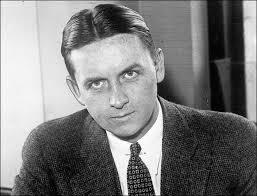
Ness was an incorruptible man in a corrupt city, and it was not an easy environment for him to work in. Even so, numerous illegal stills, breweries, and speakeasies were shut down as a result of his activities, but he could get nothing on Capone. In the end it would not be the G-Men but a former accountant and Treasury Department Bureau of Internal Revenue official Frank J Wilson, who would bring Al Capone and his Criminal Empire crashing to the ground.
In October 1931, Al Capone was charged with tax evasion after it was found that he had astonishingly kept account ledgers of his illicit business activities. The evidence was overwhelming and with these ledgers in FBI hands a guilty verdict in any Court Case appeared inevitable if of course a jury could be found that would convict him.
At first Capone tried to strike a plea bargain but when the Judge refused to be bound by any deal when it came to sentencing, Capone changed his plea to not guilty. He would instead seek to bribe and intimidate the jury.
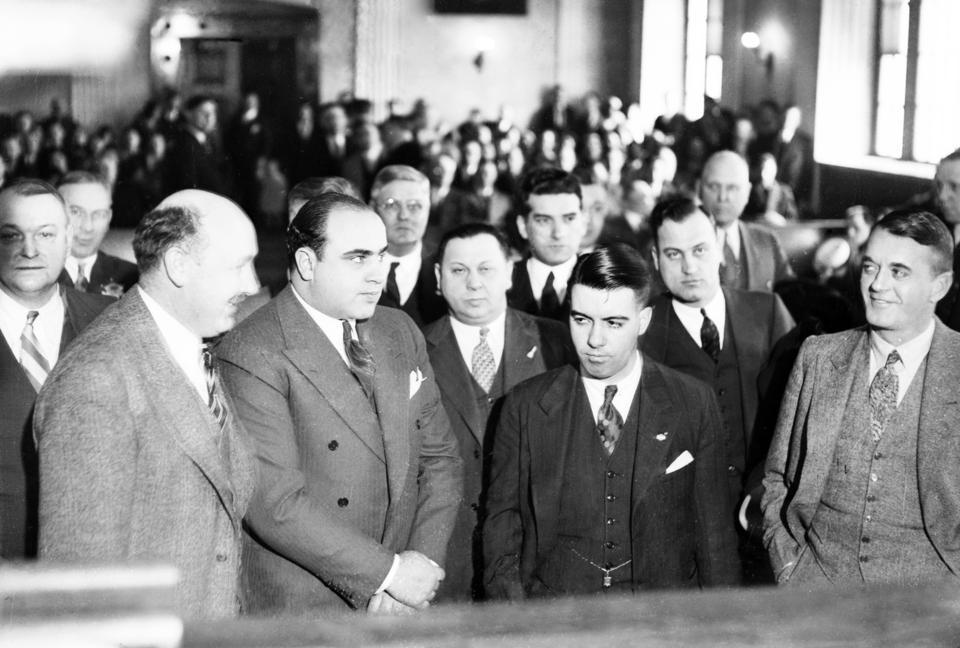
When Eliot Ness discovered the jury tampering, he got it changed at the last moment. Even so, Capone did not imagine for a moment that any jury in Chicago would convict him but in this he was proved wrong and on 17 October 1931, he was found guilty of tax evasion, contempt of court, jury tampering and sentenced to eleven years imprisonment the maximum allowed. His suit to appeal the sentence was denied.
At first, Capone tried to run his criminal enterprise from his prison cell in Atlanta State Penitentiary but when he was transferred to Alcatraz this became impossible.
As a young man he had contracted syphilis which now began to take its toll on his health which deteriorated rapidly and so with little influence within the prison and unable to communicate beyond its walls he quickly became a forgotten man. By January 1939, no longer perceived to be a threat he was moved from Alcatraz to hospital and in November of the same year he was paroled.
He had declined both physically and mentally to such an extent that many within the Chicago Outfit that he had brought to such prominence barely recognised him. Often unaware of where he was his conversation when he spoke at all had been reduced to rants against Jews, communists and foreigners. It was said that he would flinch at the name of Bugs Moran convinced that he was coming to get him even though Moran was by now himself serving a life sentence in Ohio State Prison.
It seemed to those who met him in his declining years that the once feared but now rambling and incoherent Al Capone sometimes playful and prone to tantrums had reverted to childhood. The man who had once ordered the St Valentine’s Day Massacre was to live out the rest of his life in his Florida home surrounded by family but mostly shunned and avoided by those who were once friends.
Al Capone died of a heart attack, aged 48 on 24 January 1947. His funeral was attended by all the leading mobsters of the day even though he had long ago become yesterday’s man.
Tagged as: Modern
Share this post:





